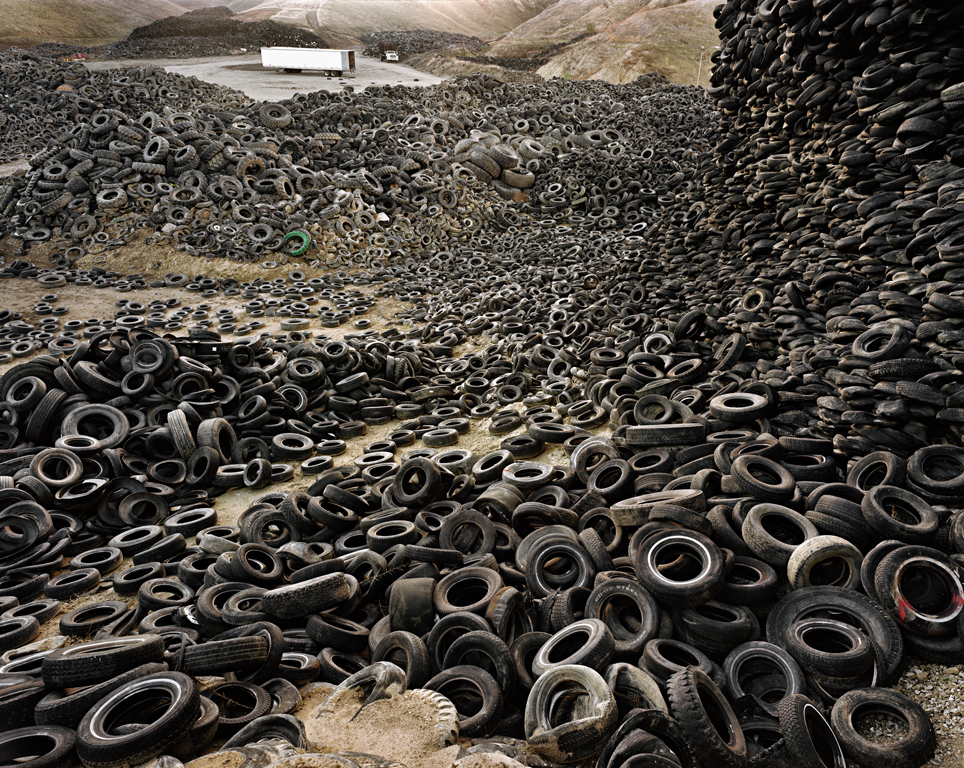
Canadian photographer Edward Burtynsky was introduced to the wilderness by his father at an early age. His fondness of nature led him in later years to document the landscapes that had been transformed by human industry — landscapes that are all around us but go largely undocumented and unnoticed.
The photograph here shows one of the largest collection of tires in the world; it resides in California. In 2009 it was estimated that we generated more than 296 million discarded tires across the United States. We rarely think about what happens to our old tires when we trade them out for a new set. These eerily beautiful images disarm us long enough for us to confront the consequences of our way of life. Burtynsky has documented polluted waterways, mines, quarries, factories in China and our oil infrastructure.
The power and importance of his work has led to books and the award-winning documentary films, Manufactured Landscapes and Anthropocene. In the artist’s own words:
“These images are meant as metaphors to the dilemma of our modern existence; they search for a dialogue between attraction and repulsion, seduction and fear. We are drawn by desire — a chance at good living, yet we are consciously or unconsciously aware that the world is suffering for our success. Our dependence on nature to provide the materials for our consumption and our concern for the health of our planet sets us into an uneasy contradiction. For me, these images function as reflecting pools of our times.”
We now live in an era when the earth and the wilderness are being transformed not by natural, geological events but rather by human intervention.
